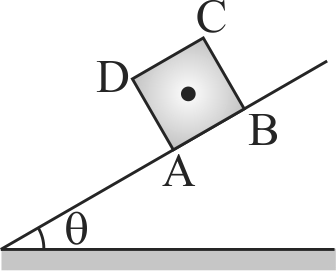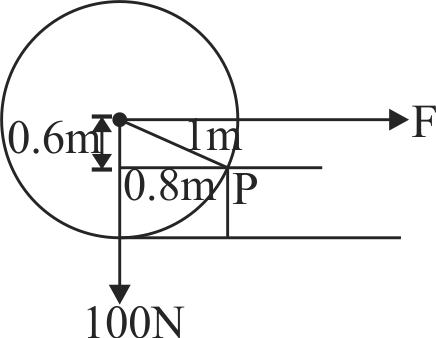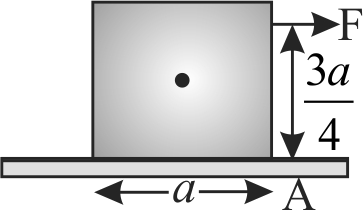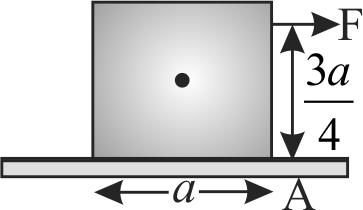366217
Figure shows a uniform block of mass \({m=\sqrt{\dfrac{3}{13}} {~kg}}\) having square base and equilateral triangular cross section placed at the edge of the floor of a truck which is under constant acceleration \({a=\dfrac{g \sqrt{3}}{4} {~m} / {s}^{2}}\) to the right. A horizontal force on the apex of the triangle \({F}\) is just enough to just tilt the block. Find the force on the block at point \({A}\) where the block is in contact with the step edge when \({F}\) is applied. (Take \({g=10 {~m} / {s}^{2}}\))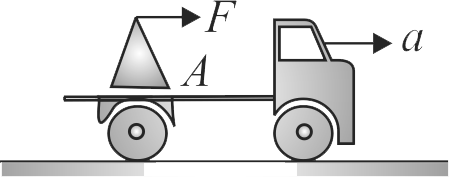
366217
Figure shows a uniform block of mass \({m=\sqrt{\dfrac{3}{13}} {~kg}}\) having square base and equilateral triangular cross section placed at the edge of the floor of a truck which is under constant acceleration \({a=\dfrac{g \sqrt{3}}{4} {~m} / {s}^{2}}\) to the right. A horizontal force on the apex of the triangle \({F}\) is just enough to just tilt the block. Find the force on the block at point \({A}\) where the block is in contact with the step edge when \({F}\) is applied. (Take \({g=10 {~m} / {s}^{2}}\))
366217
Figure shows a uniform block of mass \({m=\sqrt{\dfrac{3}{13}} {~kg}}\) having square base and equilateral triangular cross section placed at the edge of the floor of a truck which is under constant acceleration \({a=\dfrac{g \sqrt{3}}{4} {~m} / {s}^{2}}\) to the right. A horizontal force on the apex of the triangle \({F}\) is just enough to just tilt the block. Find the force on the block at point \({A}\) where the block is in contact with the step edge when \({F}\) is applied. (Take \({g=10 {~m} / {s}^{2}}\))
366217
Figure shows a uniform block of mass \({m=\sqrt{\dfrac{3}{13}} {~kg}}\) having square base and equilateral triangular cross section placed at the edge of the floor of a truck which is under constant acceleration \({a=\dfrac{g \sqrt{3}}{4} {~m} / {s}^{2}}\) to the right. A horizontal force on the apex of the triangle \({F}\) is just enough to just tilt the block. Find the force on the block at point \({A}\) where the block is in contact with the step edge when \({F}\) is applied. (Take \({g=10 {~m} / {s}^{2}}\))
